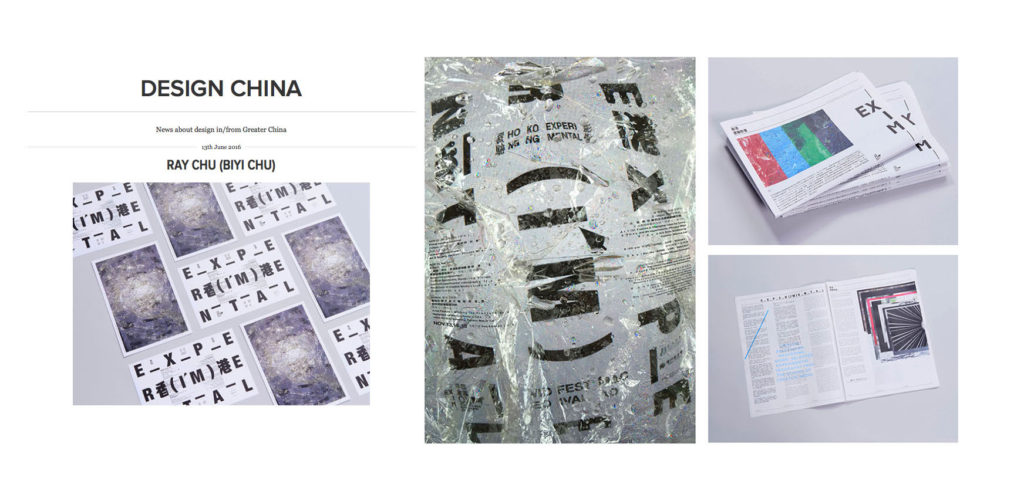13
Jun
未可視設計- 受訪於 Design China 2016
MUSE-UM.co- Interviewed by Design China 2016
Design China
Continuing with our Golden Pin Design Award interview series, Design China speaks with Co-Founder Ray Chu (Biyi Chu) of MUSE-UM in Macau.
Where are you originally from, and where and what did you study?
We are originally from two different cities. I (Ray Chu) come from Guangzhou in south China, and my partner Benny Tang is from Macau. Both of us studied graphic design at Macao Polytechnic Institute School of Art; however, I now live in Amsterdam and study at the Master of Sandberg Institute. Benny is still working in Macau.
As most students from mainland China who intend to move into the field of graphic design, I learned painting to prepare for my yishu gaokao (the entrance examination for art college in China). However, I learned from my teacher that there was an examination for Macao Polytechnic Institute, so I went there with my curiosity and, luckily, I passed the exam. Compared to the education I received in China, the system here – at least in design – is different. Most teachers, for example, have an overseas education background, so they may encourage a certain way of thinking to expand my understanding of the field. Moreover, not only do these teachers use Cantonese, but they also use English during classes. These are some of the reasons as to why I decided to study in Macau in the end.
Tell us about your most recent projects.
We are presently working on two major projects. One entails working with the New Chinese Youth Association, an organisation that helps with the sustainable development of young people in Macau, improving self-conscious gambling addictions. For this, we initiated several discussions with our client, from the problems they were facing, to how design could facilitate well-being. The final solution included a public installation, videos, print design, such as posters and brochures, and social media strategies. Our other major project concentrates on art space exchanges between Macau, Taiwan and Guangzhou.
Why did you decide to take part in the Golden Pin Design Award?
Our studio has its roots in Macau – a city with an interesting blend of cultures, including Portuguese influences. Consequently, we felt that (some of) our projects fit the theme of the Golden Pin Design Award, huaren design, really well; we think it is a good platform for design with echoes of the emotions in Chinese culture.
What has been one of the more challenging aspects of working in design in Macau?
The more challenging aspect of working as a designer in our district is that public awareness of design is still not yet very satisfactory. People are easily attracted to beautiful graphics, but they are not fully aware of the power of visual or communication design in everyday life. This lack of awareness affects commissions too, since clients use this value system to set budgets – how much they would like to pay for the design, for example.
Where do you hope to be in three to five years?
Our studio is still growing, but I would like for us to strengthen our story-telling skills and to keep working flexibly on different kinds of projects. We welcome collaborations with different designers, artists and curators, and we want to extend our abilities into other media forms, such as video making.
* Above is reproduced from DESIGN CHINA
